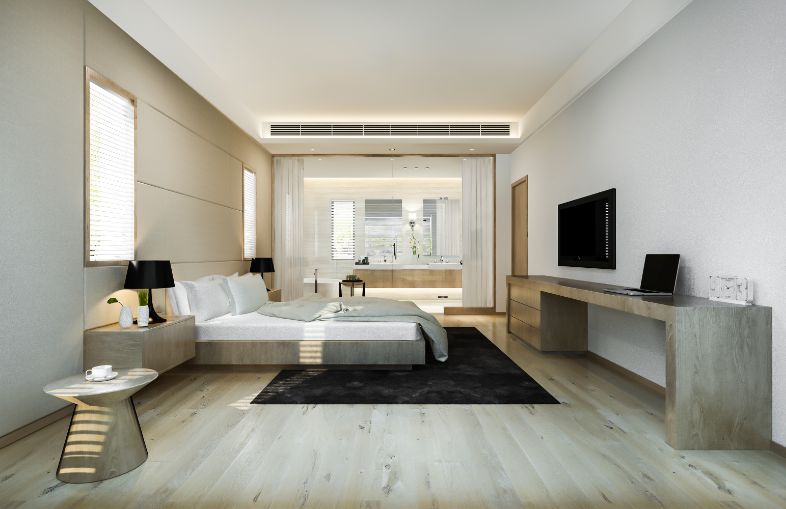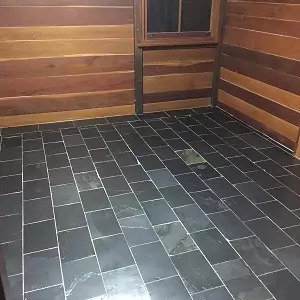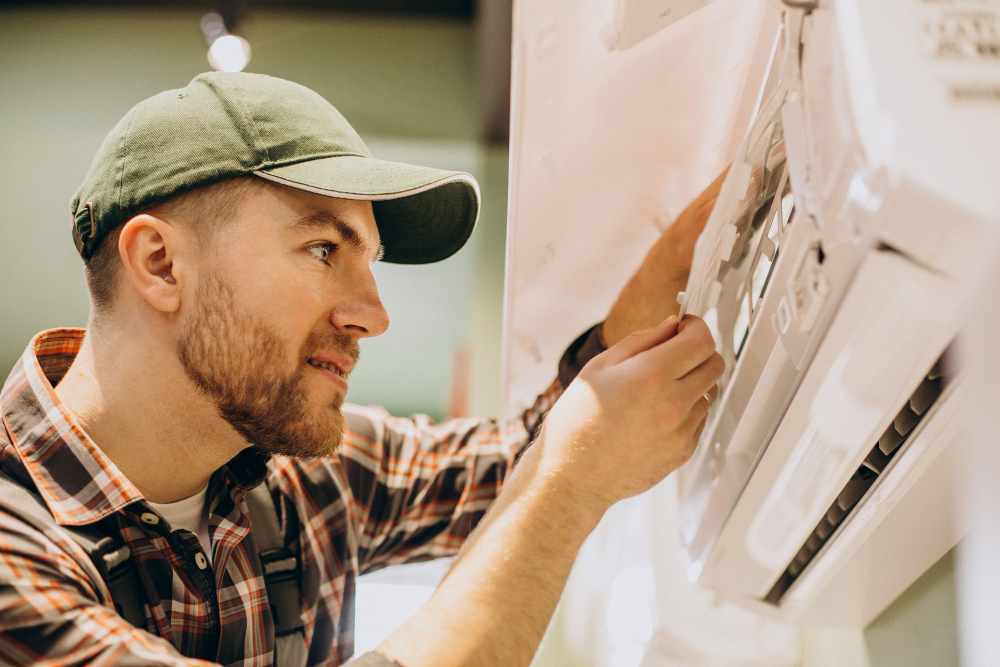False ceilings have become a staple in modern architecture, especially in places like Dubai, where the fusion of luxury and innovation is at the forefront of design. These secondary ceilings, installed below the main structural ceiling, serve both functional and aesthetic purposes, from enhancing acoustics to concealing wiring and improving energy efficiency. As Dubai continues to evolve as a global hub for cutting-edge architecture, the trends in false ceilings are also shifting, reflecting the city’s dynamic blend of tradition and modernity.
Historical Perspective
Evolution of False Ceilings in Dubai
The concept of false ceilings isn’t new, but their evolution in Dubai has been particularly noteworthy. Initially adopted for their practical benefits, such as hiding unsightly structural elements, false ceilings in Dubai have gradually transformed into a key component of interior design. Over the years, they have evolved from simple, functional features to intricate works of art that can dramatically alter the ambiance of a space.
Key Milestones in the Adoption of False Ceilings
Dubai’s architectural landscape has seen several key milestones in the adoption of false ceilings. The 1980s and 1990s marked the beginning of their widespread use in residential and commercial buildings. As the city’s skyline expanded, so did the creativity in ceiling designs. By the 2000s, false ceilings had become synonymous with luxury, featuring elaborate designs and integrated lighting systems that added a new dimension to interior spaces.
The Role of Climate and Environment
How Dubai’s Climate Influences Ceiling Design
Dubai’s hot and arid climate plays a significant role in the design of false ceilings. The intense heat requires buildings to be energy-efficient, and false ceilings contribute by providing an additional layer of insulation. This helps to keep indoor spaces cooler, reducing the reliance on air conditioning and lowering energy consumption.
Environmental Considerations in Ceiling Materials
With sustainability becoming a global priority, the choice of materials for false ceilings in Dubai is increasingly influenced by environmental considerations. Architects and designers are opting for materials that are not only aesthetically pleasing but also environmentally friendly, such as recycled gypsum, bamboo, and other renewable resources. These materials not only reduce the environmental impact but also contribute to a healthier indoor environment.
Aesthetic Trends
Minimalist Designs
In recent years, minimalist designs have gained popularity in Dubai, reflecting a global shift towards simplicity and functionality. These designs focus on clean lines, neutral colors, and uncluttered spaces, creating a serene and modern atmosphere. Minimalist false ceilings often feature hidden lighting and subtle textures, adding depth and sophistication without overwhelming the space.
Geometric Patterns and Textures
Geometric patterns and textures are also making a strong comeback in false ceiling design. Whether it’s hexagons, triangles, or more complex shapes, these patterns add a dynamic element to a room. Textured ceilings, using materials like wood or metal, can create a sense of warmth and character, making the ceiling a focal point rather than just a functional element.
Bold Colors and Lighting Integration
The use of bold colors in conjunction with integrated lighting is another trend that’s gaining traction in Dubai. Designers are experimenting with vibrant hues that contrast or complement the overall color scheme of a room. When combined with innovative lighting solutions, such as LED strips or recessed lights, these ceilings can dramatically change the mood and perception of space, adding a touch of drama and luxury.
Technological Advancements
Smart Ceilings
As technology continues to advance, so do the possibilities for false ceilings. Smart ceilings, which incorporate technology such as sensors, speakers, and lighting controls, are becoming increasingly popular in Dubai. These ceilings can be programmed to adjust lighting based on the time of day or even play music, creating a fully immersive experience. Smart ceilings represent the future of home automation, blending seamlessly with the architecture while providing enhanced convenience and comfort.
Energy-Efficient Designs
Energy efficiency is a key consideration in modern ceiling design. With the rising costs of energy and the push towards sustainable living, energy-efficient false ceilings are becoming a must-have in Dubai’s new constructions. These designs often use materials that reflect heat or provide additional insulation, reducing the need for artificial cooling. In some cases, ceilings are integrated with solar panels or other renewable energy sources, further enhancing their sustainability.
Future Materials
Eco-Friendly Materials
The future of false ceilings in Dubai will likely be dominated by eco-friendly materials. As the city strives to meet its sustainability goals, the use of materials that are recyclable, renewable, or have a low environmental impact is becoming more common. Eco-friendly options like bamboo, recycled wood, and natural fibers not only contribute to a greener environment but also offer unique aesthetic qualities that appeal to environmentally-conscious consumers.
Recycled and Renewable Resources
The trend towards using recycled and renewable resources in ceiling design is gaining momentum. Materials like recycled gypsum, reclaimed wood, and even recycled plastic are being used to create stunning and sustainable ceiling designs. These materials are not only environmentally friendly but also versatile, allowing for a wide range of design possibilities that can be tailored to meet the specific needs of a project.
Impact of Urbanization
How Dubai’s Rapid Urbanization Is Influencing Ceiling Trends
Dubai’s rapid urbanization has a significant impact on ceiling trends. As the city continues to grow, the demand for space-efficient and cost-effective designs is increasing. False ceilings are being used not only to enhance the aesthetic appeal of interiors but also to make the most of limited space. This is particularly important in high-rise buildings, where ceiling height may be restricted, and every inch of space needs to be optimized.
The Need for Space-Saving Designs in High-Rise Buildings
In high-rise buildings, where space is at a premium, false ceilings are being designed to be as thin and unobtrusive as possible. This allows for more headroom while still providing the necessary functions, such as housing lighting, ventilation, and fire suppression systems. The trend towards space-saving designs is expected to continue as urbanization drives the development of more high-rise residential and commercial buildings.



